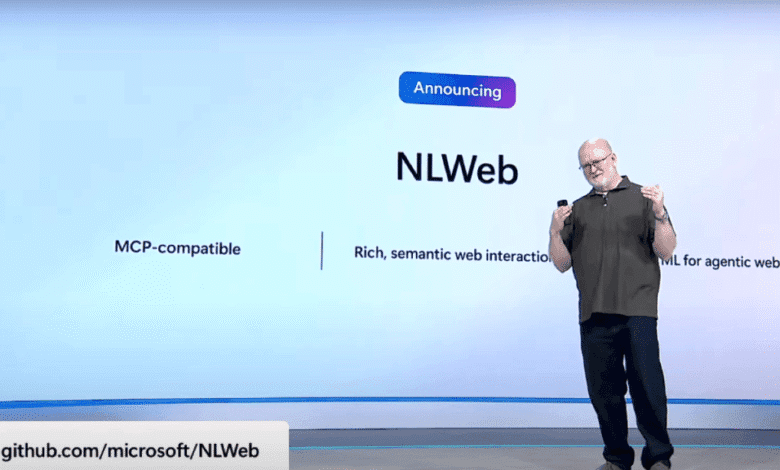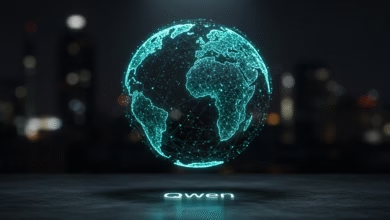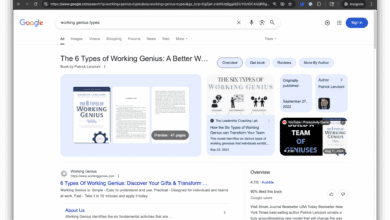AI-Enabling the Web: NLweb’s Role for Enterprises

▼ Summary
– Early web syndication protocols like RSS simplified content discovery, leading to modern AI-focused protocols like Microsoft’s NLWeb.
– NLWeb allows websites to add AI-powered conversational interfaces, leveraging existing structured data formats like RSS and functioning as an MCP server.
– NLWeb transforms websites into AI-ready platforms by processing structured data into vector databases and enhancing it with LLMs for semantic search and responses.
– Competing protocols like Google’s Agent2Agent and LLMs.txt serve different purposes, with NLWeb focusing on real-time interactions and MCP acting as a foundational transport layer.
– Enterprises are advised to pilot NLWeb now for competitive advantage, though adoption maturity may take 2-3 years, with regulated industries needing caution.
The web is undergoing another transformation, this time powered by artificial intelligence. Just as RSS and Atom revolutionized content discovery in the early 2000s, new protocols are emerging to make websites more accessible to AI systems. Among these, Microsoft’s NLWeb stands out as a groundbreaking open-source initiative that could redefine how enterprises integrate AI into their digital presence.
Developed by RV Guha, the same innovator behind RSS and schema.org, NLWeb transforms websites into AI-ready platforms by enabling natural language interactions. Unlike traditional search, which relies on keywords, this protocol allows users to query content conversationally while giving AI systems structured access to information.
How NLWeb Works for Businesses
NLWeb doesn’t require a complete overhaul of existing infrastructure. Instead, it builds on what’s already in place:
- Structured Data Utilization: The system taps into existing RSS feeds, markup, and other semi-structured formats, eliminating the need for publishers to rebuild their content pipelines.
- Vector Database Integration: Content gets stored in vector databases, enabling semantic search and efficient retrieval across major platforms.
- AI-Powered Enhancement: Large language models (LLMs) enrich stored data with contextual insights—like adding reviews and location details to restaurant listings—delivering intelligent responses rather than raw data.
- Universal Interface Creation: Websites gain a natural language interface for both human users and AI agents, making interactions seamless.
This approach makes AI adoption as straightforward as building a basic webpage was in the early internet days.
NLWeb vs. Other AI Protocols
The AI protocol landscape is crowded, but each solution serves a distinct purpose:
- Google’s Agent2Agent (A2A): Focuses on AI-to-AI communication, acting as a backend orchestration tool rather than a website enhancement layer.
- LLMs.txt: Helps LLMs crawl web content but doesn’t enable real-time conversational interfaces like NLWeb.
- Anthropic’s Model Control Protocol (MCP): Acts as the transport layer for AI systems, with NLWeb functioning as the interface layer—akin to HTML and TCP/IP for the agentic web.
According to Forrester’s Will McKeon-White, NLWeb’s biggest advantage is better AI comprehension of website structures, reducing errors and minimizing interface rework.
Early Enterprise Adoption
Microsoft isn’t waiting for the market to catch up—major players like Shopify, Allrecipes, and O’Reilly Media are already implementing NLWeb.
Andrew Odewahn, CTO of O’Reilly Media, highlights its dual value:
- For consumers: Enhances internal AI tools by leveraging existing metadata.
- For publishers: Enables structured data sharing via schema.org standards, making content accessible to AI without extra effort.
Since NLWeb is open-source and runs on existing infrastructure, businesses can experiment with minimal risk.
Should Enterprises Adopt NLWeb Now?
Opinions vary on timing:
- Constellation Research’s Michael Ni suggests a cautious approach, predicting 2-3 years before widespread adoption. Early adopters, especially marketplaces, can pilot now to shape the standard.
- Maria Gorskikh of MIT’s NANDA project argues for urgency, comparing NLWeb to the early days of APIs and mobile apps. However, regulated industries should wait for decentralized verification systems before full deployment.
The Bottom Line for AI Leaders
AI will interact with your website—whether you enable it or not. NLWeb offers a streamlined path to AI readiness, much like RSS became essential for content syndication. In the near future, users will expect conversational search, and AI agents will demand structured access.
For enterprises, the question isn’t if but when to adopt. Those who act now can shape the standard and gain a competitive edge, while late adopters risk falling behind in the AI-powered web era.
(Source: VentureBeat)






